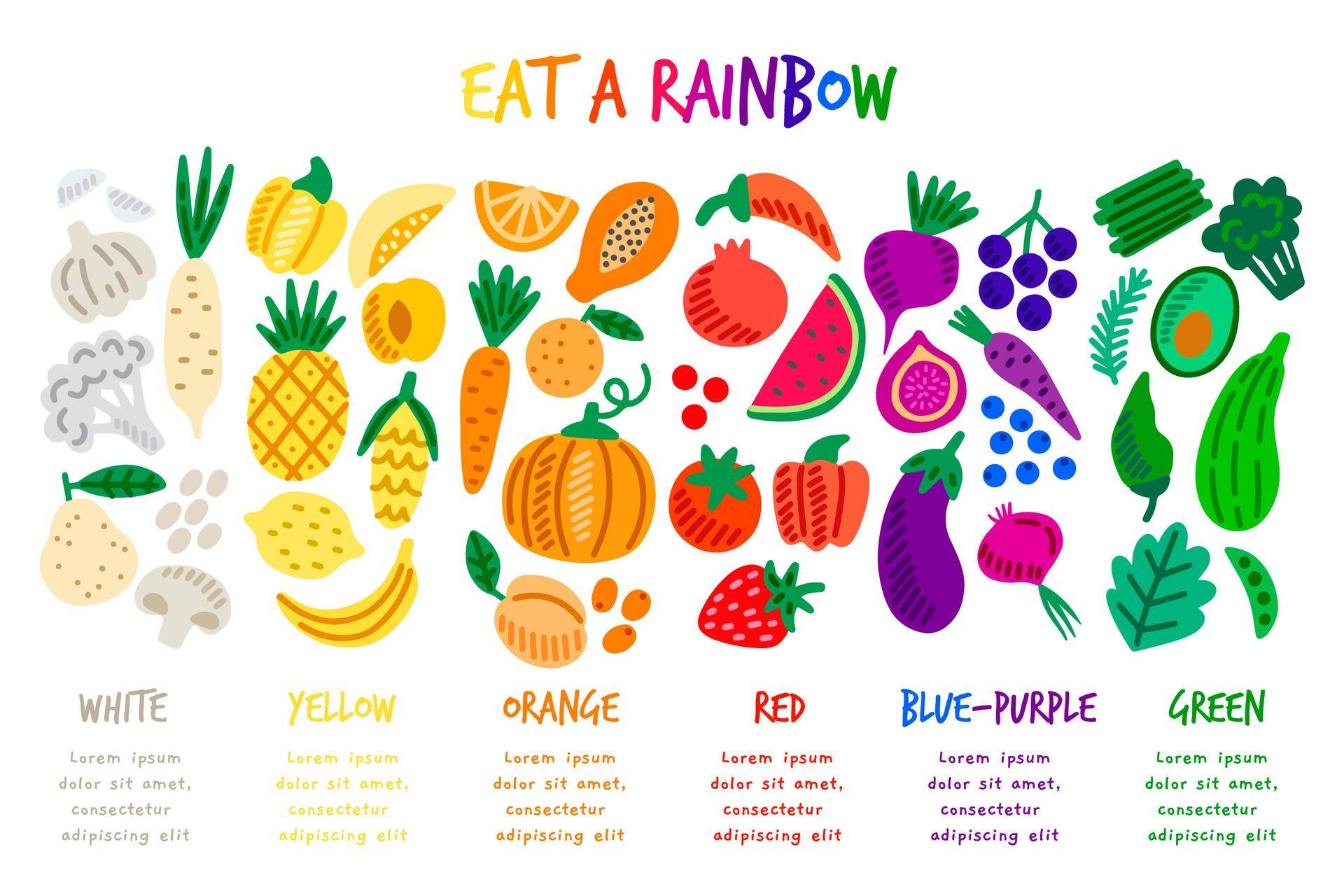

Splash Colors on Your Plate: Eat the Rainbow, Fuel Your Microbiome!
Holi, the festival of colors, is a dazzling spring celebration where people splash each other with vibrant powders and water, symbolizing the victory of good over evil and the joyful arrival of spring!
But did you know that in the Gut Microbiome world we could also win over bad microbes using colors just like our Holi festival. Just like the colors we throw in the air, the foods we eat can also bring a splash of color to our gut microbiome?
We’ve all heard dieticians and nutritionists say, “Eat the rainbow,” but how often do we truly embrace it? In this blog, let’s explore why eating a variety of colorful foods isn’t just visually appealing—it’s a game-changer for gut health!
The Science Behind Eating by Color
Different colors in fruits, vegetables, and natural foods represent a powerhouse of nutrients, antioxidants, and prebiotics that fuel beneficial gut bacteria. Emerging research suggests that plant-based foods are more than just vitamin and mineral sources—they are rich in phytonutrients, which play a critical role in cellular health. These compounds influence protein kinases and epigenetic mechanisms, leading to better digestion, immunity, and overall well-being.
Yet, despite knowing the benefits, most people fall short of recommended fruit and vegetable intake. Adopting an “eat by color” approach could be the key to bridging this gap!
The Psychological Boost of Eating Colorful Foods
Beyond gut health, a diet rich in fruits and vegetables has been linked to happiness and mental well-being. Studies show that increasing your intake to eight portions daily can have a psychological impact comparable to the joy of landing a new job! More than just a feast for the eyes, colorful foods nourish both the gut and the mind—helping us feel happier, more satisfied, and energized.
Here’s how each color contributes to a happy and diverse microbiome:
- Red Foods and Inflammation. High in antioxidants and red-food carotenoids (e.g., astaxanthin and lycopene), anti-inflammatory properties, and immune system modulation (e.g., vitamin C) (Apples, Cherries, Red bell peppers, Red beets).
- Orange Foods and Reproductive Health. Abundant in carotenoids, endocrine-regulating activities, and role in fertility through support of processes such as ovulation (Apricots, Oranges, Pumpkin, Carrots).
- Yellow Foods and Digestion. Rich in fibers to support a complex microbiome and assist in maintaining gastrointestinal health through gastric motility and/or digestive secretions (Corn, Squash, Ginger, Pineapple).
- Green Foods and Cardiovascular Health. High in a variety of nutrients for cardiovascular health, such as vitamin K, folate, magnesium, potassium, and dietary nitrates (Avocado, Olives, Brussels sprouts, Celery).
- Blue-Purple Foods and Cognition. Polyphenol-rich foods to assist with learning, memory, and mood (flavonoids, procyanidins (monomeric and oligomeric form), flavonols (i.e., kaempferol, quercetin, and myricetin), phenolic acids (mainly hydroxycinnamic acids), and derivatives of stilbenes) (Blackberries, Eggplant, Plums, Prunes).
Scientists have discovered that certain gut bacterial orders—Actinomycetales, Pseudomonadales, and Propionibacteriales—carry genes that enable them to produce vitamin K2, a crucial nutrient for bone and heart health.
Similarly, leafy greens play a vital role in gut health. They contain sulfoquinovose, a compound that feeds beneficial E. coli, helping form a protective barrier against harmful bacteria.
FUN FACT: When we ‘eat’ leafy greens full of sulfur, our bacteria digest and absorb it. They use it to make proteins for themselves and then, when the bacteria die and are released via pooping, the sulfur makes its way back into the environment where it is used by other organisms to use, grow, live and reproduce. The circle of life!
Holi is a festival of joy, and what better way to celebrate than by nourishing your gut with a colorful feast? This year, let’s embrace natural hues in our food and paint our microbiome with health and happiness!
Reference

